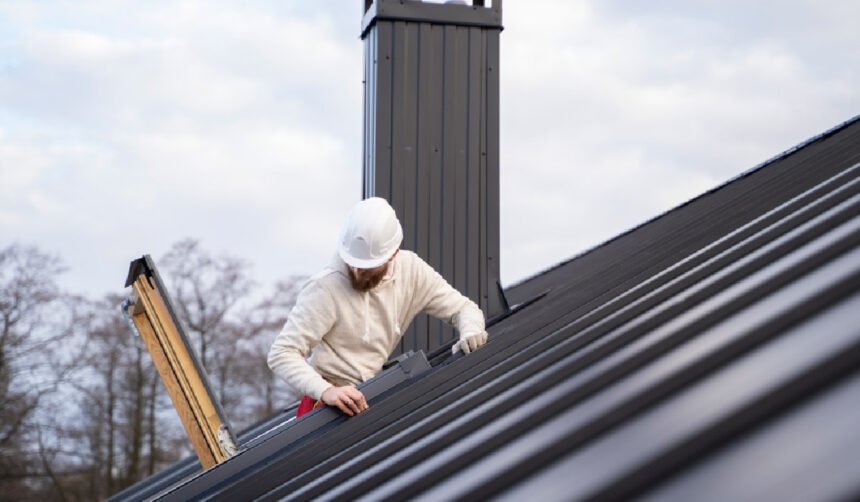When it comes to protecting your home from the elements, few things are as crucial as the condition of your roof. The roof serves as the first line of defense against rain, snow, wind, and extreme temperatures. Yet, many homeowners tend to overlook roofing issues until they escalate into more serious and costly problems. Taking the time to understand the value of regular inspections, maintenance, and roof repair can save you money and stress in the long run.
In this article, we’ll explore the causes of roof damage, signs to watch out for, materials involved in repairs, and how to choose the right contractor to ensure your roof stays in top condition. Whether you’re dealing with a minor leak or more significant structural issues, timely intervention can make a world of difference.
Why Roofs Fail Over Time
Roofs are constantly exposed to the elements. From scorching sun and UV rays to torrential rains, hailstorms, and snow accumulation, a roof’s integrity can be tested daily. Over time, even the most durable materials will degrade. Here are some of the common reasons roofs fail:
1. Weather Extremes
One of the most common causes of roofing damage is harsh weather. Shingles can be ripped off by strong winds, water can seep in through small cracks, and accumulated snow can cause sagging or even collapse.
2. Age of the Roof
Most roofing materials have a limited lifespan. Asphalt shingles may last 20–30 years, while metal or tile roofs may last 40–70 years. Regardless of material, all roofs require occasional maintenance and eventual replacement.
3. Improper Installation
Faulty installation can lead to premature damage. Poor flashing, uneven shingle placement, and inadequate ventilation can all lead to leaks and structural issues.
4. Lack of Maintenance
Routine maintenance helps catch minor problems before they become major. Clogged gutters, cracked tiles, or missing shingles can all be easily addressed—if caught early.
Early Signs You Need Roof Repair
Understanding the signs that your roof may need repair is essential in preventing further damage. Some indicators are subtle, while others are more obvious.
1. Water Stains on Ceilings or Walls
Discoloration on ceilings or walls is often a sign of a leaky roof. These stains may be brown or yellow and could indicate water seepage from damaged areas.
2. Missing or Damaged Shingles
Shingles protect the underlayers of your roof. Missing, curled, or broken shingles expose the interior to moisture and increase the likelihood of leaks.
3. Moss or Algae Growth
Excessive moss or algae growth can trap moisture and degrade roofing materials over time. While it may seem cosmetic, it’s a sign your roof needs attention.
4. Sagging Roof Deck
A sagging area in the roof may indicate structural issues or prolonged water damage. This issue requires immediate professional inspection.
5. Visible Light in the Attic
If you can see daylight coming through your attic ceiling, it’s a clear sign that your roof has holes or gaps that need to be sealed.
The Process of Roof Repair
Understanding how professionals approach roof repair can give you peace of mind when it’s time to address an issue. Although every repair is unique, the process usually involves several steps:
1. Inspection
A thorough inspection helps identify the root cause of the damage. This may include checking the surface, attic, flashing, and gutters.
2. Assessment and Estimate
After identifying the issues, a contractor will provide a detailed estimate including labor, materials, and time involved.
3. Preparation
Before starting the repair, the area is cleared, and safety measures are put in place. This might involve removing old shingles, sealing exposed areas, and prepping the work zone.
4. Repair or Replacement
Depending on the extent of the damage, the contractor may replace shingles, reseal joints, fix flashing, or replace underlayment.
5. Final Inspection
Once repairs are complete, a final inspection ensures everything is up to code and that the problem has been fully resolved.
Roofing Materials and Their Durability
Different roofing materials offer varying lifespans, costs, and aesthetics. When it comes to roof repair, understanding what your roof is made of can help guide your maintenance strategy.
1. Asphalt Shingles
The most common roofing material, asphalt shingles are affordable and relatively easy to repair. They typically last 20–30 years.
2. Metal Roofing
Durable and weather-resistant, metal roofs can last up to 70 years. However, they require specialized repair methods and tools.
3. Clay or Concrete Tiles
These materials are long-lasting and visually appealing but can be prone to cracking under pressure. Repairs are more delicate but can extend their life significantly.
4. Wood Shakes or Shingles
These offer a natural look but require more maintenance. They are susceptible to rot, insects, and mold if not properly treated.
Preventive Maintenance Tips
While roof repair is sometimes inevitable, many issues can be avoided with regular preventive maintenance. Here are some helpful tips:
- Clean gutters regularly to prevent water backup and damage.
- Inspect after storms for missing shingles or visible damage.
- Trim overhanging branches to avoid falling limbs and debris buildup.
- Check attic ventilation to reduce moisture buildup.
- Schedule annual inspections with a roofing professional.
Taking these simple steps can significantly prolong the life of your roof and reduce repair costs over time.
Choosing the Right Contractor for Roof Repair
One of the most critical decisions in the repair process is selecting a qualified roofing contractor. With so many options available, it’s essential to consider a few key factors:
1. License and Insurance
Always verify that the contractor is licensed and carries adequate insurance. This protects you from liability in case of accidents.
2. Experience and References
A well-established company with a solid reputation is often a safer bet. Ask for references and read reviews before making a decision.
3. Warranty Offerings
A reputable contractor will offer warranties on both labor and materials, giving you peace of mind in case issues arise post-repair.
4. Detailed Estimates
Avoid vague pricing. A trustworthy contractor will provide a clear, written estimate outlining all costs involved in the roof repair.
Costs Associated With Roofing Repairs
The cost of roof repair can vary significantly depending on several factors:
- Extent of damage (minor leaks vs. structural repairs)
- Type of roofing material
- Labor rates in your area
- Accessibility of the roof
Minor repairs may cost a few hundred dollars, while extensive repairs can run into the thousands. However, addressing problems early usually prevents costlier damage down the line.
When Replacement Might Be the Better Option
Sometimes, roof repair might not be the most cost-effective solution—especially if your roof is nearing the end of its expected lifespan. Here are some signs a full replacement might be warranted:
- Frequent repairs over a short period
- Severe water damage or mold issues
- Sagging structural components
- A roof over 25 years old
In such cases, investing in a new roof may offer better value and peace of mind in the long term.
Conclusion
Roof maintenance is one of the most important aspects of homeownership. Proactively identifying and addressing minor issues through timely roof repair in Sussex can prevent expensive and inconvenient problems down the road. Whether you’re dealing with missing shingles, minor leaks, or more extensive damage, acting quickly and working with the right professionals is key.
Don’t wait for a major leak to start thinking about your roof. Regular inspections, proper maintenance, and early roof repair interventions ensure your home remains protected, energy-efficient, and structurally sound for years to come.
If you’re noticing early warning signs or just want peace of mind, now is the time to consider a thorough roof repair from a trusted professional. Investing in your roof today means fewer headaches tomorrow.
For More Information, Visit Dotmagazine








